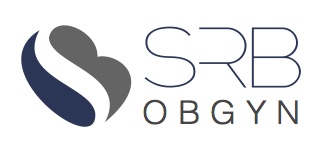Here we are presenting a journey through pregnancy, based on some of Dr. Wilkes' personal and professional experience. In this series of letters to guide you through each trimester, she provides personal insights into things you may experience and steps you should take to ensure a healthy pregnancy. In this third letter from Dr. Wilkes, she explains some of the more uncomfortable sensations associated with physical changes in your body. She also includes some tips for preparing for maternity leave, feeding your baby, and even items to bring to the hospital to ensure you and your baby have a safe and comfortable ride home!
The third trimester typically yields the most complaints and discomfort but it also means that you will soon be able to hold your baby. In this trimester, you will begin to notice more physical changes. Your breasts can increase one to two sizes. If you are on your feet often, back pain can also increase. It is important to wear the appropriate support bands such as waist control bands or back braces to ensure that you are not straining yourself too much.
You may also experience a tightening feeling in your upper belly. These light contractions, called “Braxton Hicks contractions,” are completely normal in this stage of your pregnancy. Women who are in their third trimester in the winter time are lucky. In the summer time, you may experience more cramping due to dehydration and the increased heat. You are not only hydrating yourself, you are hydrating your growing baby as well. So, it is very important to stay hydrated during your pregnancy.
During this trimester, you will really begin to feel the baby move. You may experience pain when the baby pushes against your pelvis, otherwise known as “lightning crotch.” This pain can stop you in your tracks and you may feel the need to sit down. This is completely normal and common.
Another factor to consider in this trimester is when to start maternity leave and the length of time to take off. Ensuring your time off from work in advance will ensure time to recover. Everyone is different in how much time off they will need. You should take at least 6 weeks after a vaginal delivery and 8 weeks after a c-section. In some cases, employers will allow up to 16 weeks. It is up to you to decide what is best for you and your baby. Personally, I have opted for 8 weeks. There may be some guilt when it is time to return to work and you may feel that there was not enough time together with your baby. This is normal and you should talk with friends and family about your feelings.
When preparing for how to feed your baby, there are options as well. Breastfeeding provides nutrients, immunity strength, and bonding, but in some cases it is not an option. Sometimes formula is the best option when considering both you and your baby. It is a viable option as long as the baby is healthy and growing.
No one can prepare you for the pain of labor. When it happens, you will know. It is a culmination of multiple symptoms like contractions lasting over an hour that are becoming closer in time, when this starts to happen please be sure to contact your provider.
Use your provider, friends and family as resources in deciding what items you will need to bring the baby home. Some items you need to consider are a car seat, a crib or bassinet, a changing table, a diaper bag, a stroller or baby wearing device and diapers…lots and lots of diapers.
You’re almost there! Try to stay calm and get ready for your beautiful baby to enter this world. It will all be worth it soon.
Check out the rest of the series! What to Expect During Each Trimester of Pregnancy - First Trimester - Second Trimester - Third Trimester
If you have any questions regarding pregnancy, please contact SRB & Associates at (904) 262-5333 and we will help answer all of your pregnancy questions!
